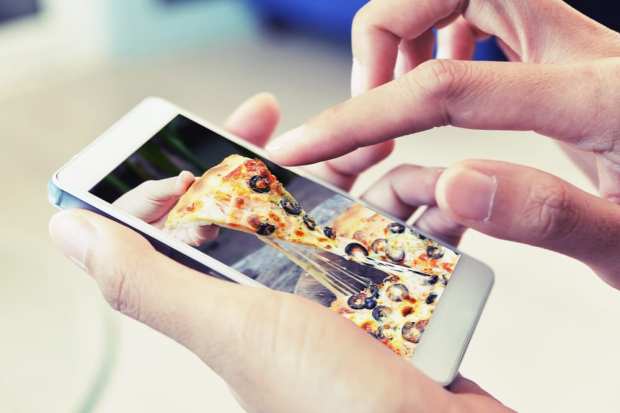Mobile Order-Ahead Risks And Resolutions

Hungry people universally agree that having delicious food delivered hot to your home is a beautiful thing. It’s also a tasty enticement for a cybercrook to let you buy them dinner, too, and maybe a flat-screen or a Rolex down the line, if the scam goes undetected long enough.
It’s the invisible, unwanted price we pay for the otherwise outstanding experiences that restaurants and ghost kitchens have been cooking up during the year of COVID-19.
The PYMNTS Mobile Order-Ahead Tracker® done in collaboration with Kount, assesses risk in the mobile order-ahead space, and looks at what companies are doing about it.
Turns out consumers want to know their favorite eateries are being judicious with data.
“A survey of 1,000 quick-service restaurant (QSR) customers found that more than half of respondents worried that their digital interactions with QSRs could result in a form of fraud, such as an account takeover (ATO), stolen payment information or fake reviews,” the Tracker states, “with nearly half having concerns about credit card data theft and 41 percent being wary of a potential ATO. This hasn’t deterred consumers from installing these apps on their mobile devices, though, with recent research showing a 51 percent surge in restaurant delivery app downloads from the Apple App Store during the pandemic’s onset in late March and into April.”
Upside, Downsides Of MOA
There’s no doubt that the mobile order-ahead (MOA) craze was what the doctor ordered back in the interminable COVID-19 spring. In this case, it was Dr. Anthony Fauci of the National Institute of Allergy and Infectious Diseases, who back in March said to stay home until they figure this thing out.
Dr. Fauci gave no dietary advice that we know of. He didn’t need to.
Some Americans reportedly spent up to half of their stimulus checks on MOA during the depths of this past spring. The internet was deluged with food deliveries that were orders of magnitude above anything they had seen. And each one of those orders was a potential fraud.
For this reason, artificial intelligence (AI) and machine learning (ML) are being widely deployed to keep the important MOA channel clear of digital threats, so real customers can enjoy it.
“Because QSR transactions are unique, determining identity trust requires a robust data network of signals from billions of annual interactions. For instance, ordering a coffee three times a day — or seven at once — may not be unusual, and a simple solution may not make an accurate decision in real time,” Rich Stuppy, chief customer experience officer at Kount, told PYMNTS.
“Adaptive AI coupled with the right data can make highly accurate and scalable decisions while preventing both emerging and existing fraud. Further, with the right trust data and access to analytics, QSRs can proactively identify their best customers, which opens the door to marketing opportunities and special offers to enhance the customer experience,” he said.
The Correct Solution
This is a time for solution shopping, as the reopening grinds forward and more business is transacted. Securing mobile food ordering from fraud has become a central concern for some of the best-known brands in quick-service restaurants and fast food.
With the wrong solution, eateries won’t have to worry about cybercrime because they likely won’t achieve sufficient volume to be a worthwhile target. It reinforces the notion that consumer experience and fraud defense is a tightrope walk: you get only so many tries.
“Almost 40 percent of consumers report that dealing with complex account login procedures that require multiple steps before allowing them to place orders is the top source of friction they confront when ordering online or through mobile apps,” per the new Tracker.
“Convenience thus appears to be a key consideration, with recent reports showing that approximately 33 percent of current restaurant experiences involve technologies that offer numerous preordering capabilities. AI- and ML-supplemented tools can also bolster restaurants’ fraud prevention efforts. Such solutions can operate in the background without disturbing customers’ transactions.”
